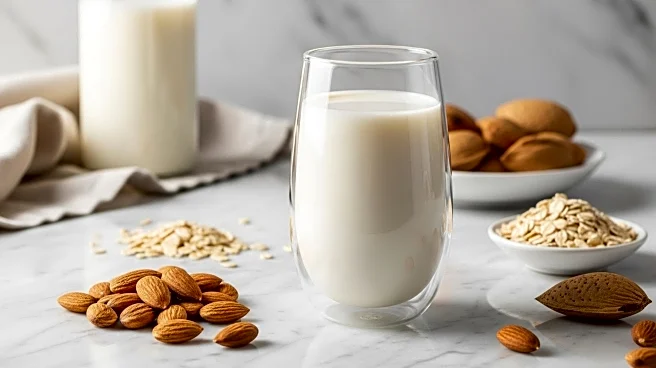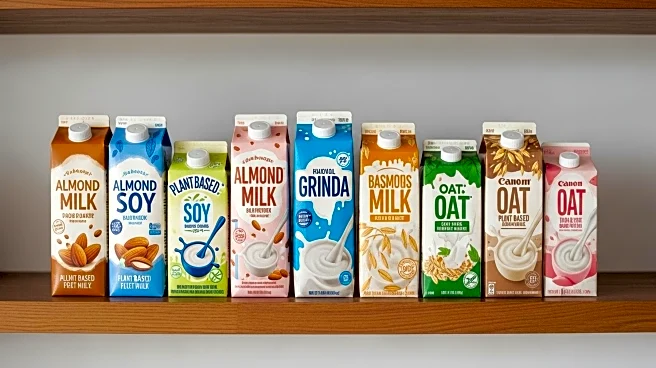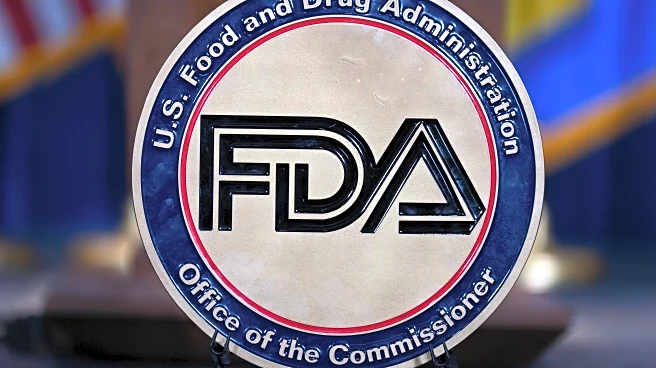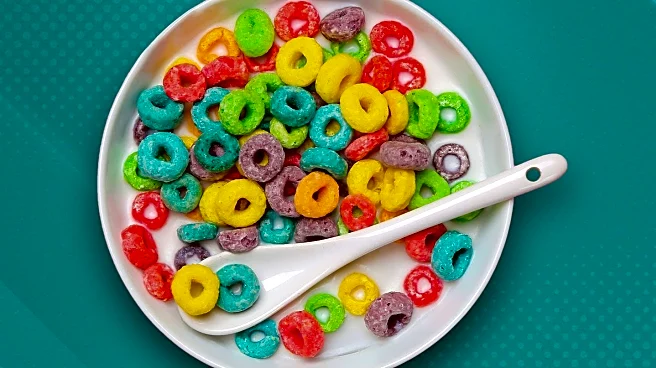What's Happening?
The dairy alternative industry is experiencing a slowdown in sales, prompting a need for ingredient reformulations to improve protein quality and texture in products like milk, yogurt, and cheese alternatives. According to Circana, a market research firm, U.S. retail sales of milk alternatives fell by 3.7% to $2.45 billion, while dairy milk sales increased by 4.6% to $17.65 billion over a 52-week period. The protein gap between plant-based and conventional milks remains significant, with conventional milk offering 8 grams of protein compared to 1 or 2 grams in plant-based alternatives. Companies like Cargill and Amano Enzyme are exploring new plant protein sources and enzymes to enhance the stability and texture of these products. Burcon NutraScience Corp. is also introducing high-purity plant proteins sourced from peas, canola, sunflower, and fava beans to improve the taste and functionality of dairy alternatives.
Why It's Important?
The decline in sales of dairy alternatives highlights the challenges faced by the industry in meeting consumer expectations for taste and nutritional content. Improving protein quality and texture is crucial for the growth of plant-based products, which are increasingly popular among consumers seeking healthier and environmentally friendly options. The development of new plant protein sources and technologies can help bridge the nutritional gap between plant-based and conventional dairy products, potentially leading to increased consumer acceptance and market growth. Companies that successfully innovate in this space may gain a competitive edge and contribute to the broader shift towards sustainable food production.
What's Next?
The industry is likely to see continued research and development efforts aimed at improving the nutritional profile and sensory appeal of dairy alternatives. Companies may invest in new technologies and partnerships to enhance product formulations. As consumer demand for plant-based products grows, there may be increased pressure on manufacturers to deliver high-quality alternatives that match or exceed the nutritional benefits of traditional dairy products. Regulatory changes and industry standards could also evolve to support innovation and ensure product safety and quality.











